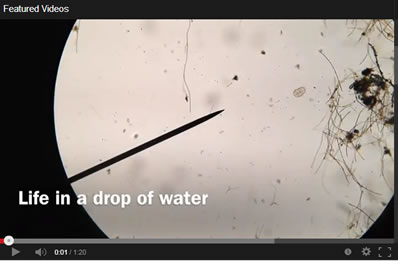Online Education as a Way to Your Next Job
” Educational trend reporter Rafael Pittman writes about the value of online learning as a path to employment in the following article courtesy of Digital Partner. He suggests that the overall attitude we have towards online courses is changing gradually, and that the benefits of a focused program of study can often provide the type of training potential employers require. ”
via Digital Partner
As the number of online education options increases, so does the quality and acceptance. A Pew Research survey reports that more than 50 percent of the college presidents responded that online classes had the same value as conventional college classes. Nearly 40 percent of adults who have taken an online class say it was comparable to a traditional class. Using online classes is one way of improving your skills and supplementing your resume as you look for that next job.
Attitudes are Changing
How people view online classes and degrees is shifting. Time Magazine reported that human resource managers have improved their view of online degrees, sometimes considering them on par with traditional brick-and-mortar degrees. The challenge is that many HR managers are still unfamiliar with online education and the level of quality it can offer. Others who experience it first-hand, or have hired people with online degrees, are more supportive of the approach.
The Value of Online Education
Bloomberg Businessweek surveyed several high-tech companies that said they still favored traditional four-year degrees to online degrees when hiring. They also indicated that they would select an applicant with a degree over one with a certificate from an online program. They did agree that a person who already has a degree would have an edge in the hiring process if they also had certificates or additional training through online classes. When completing employment applications on sites such www.job-applications.com, include any online classes taken. This shows initiative and an interest in keeping skills current.
The Nature of Online Classes is Changing
Colleges and universities are getting engaged in online education through Massive Open Online Courses, or MOOCs. These programs are often free or very low cost and available to anyone who can get online. Three of the pioneers in this area are Udacity, edX and Coursera. They offer a variety of courses from an introduction to traditional topics like philosophy and psychology to engineering and programming.
AT&T and Google are both working with MOOCs to create online courses of direct interest to targeted employers, themselves included, noted the Wall Street Journal. MIT is working with edX to create certificate programs in computer science and supply chain management that would benefit such partners as UPS and Wal-Mart.
The challenge of MOOCs for recruiters is that they don’t yet know how to evaluate the quality of the classes compared to the traditional course. There is also some resistance because these classes are often free, which is a challenge to HR managers sifting through resumes of people with hundred thousand dollar degrees. The resistance to hiring someone based on their online education continues to be:
• Concern about how the students were assessed in the course or program
• Concern about the reputation of the online college
• Concern that online courses are not as challenging as other types of college courses
Defining Your Educational Path Toward a Job
One challenge facing online students is that the majority of courses don’t offer college credit. Even courses that are deemed as complete as their traditional counterparts don’t offer credit. For students supplementing their college career with online courses, they may gain additional knowledge and skills, but they will be no closer to satisfying their degree.
The Wall Street Journal noted that the typical online student enrolled in a MOOC has a college degree and is taking the course to dive into some new aspect of their field. The certificate is a way to indicate to potential employers their level of commitment to working in that area.







